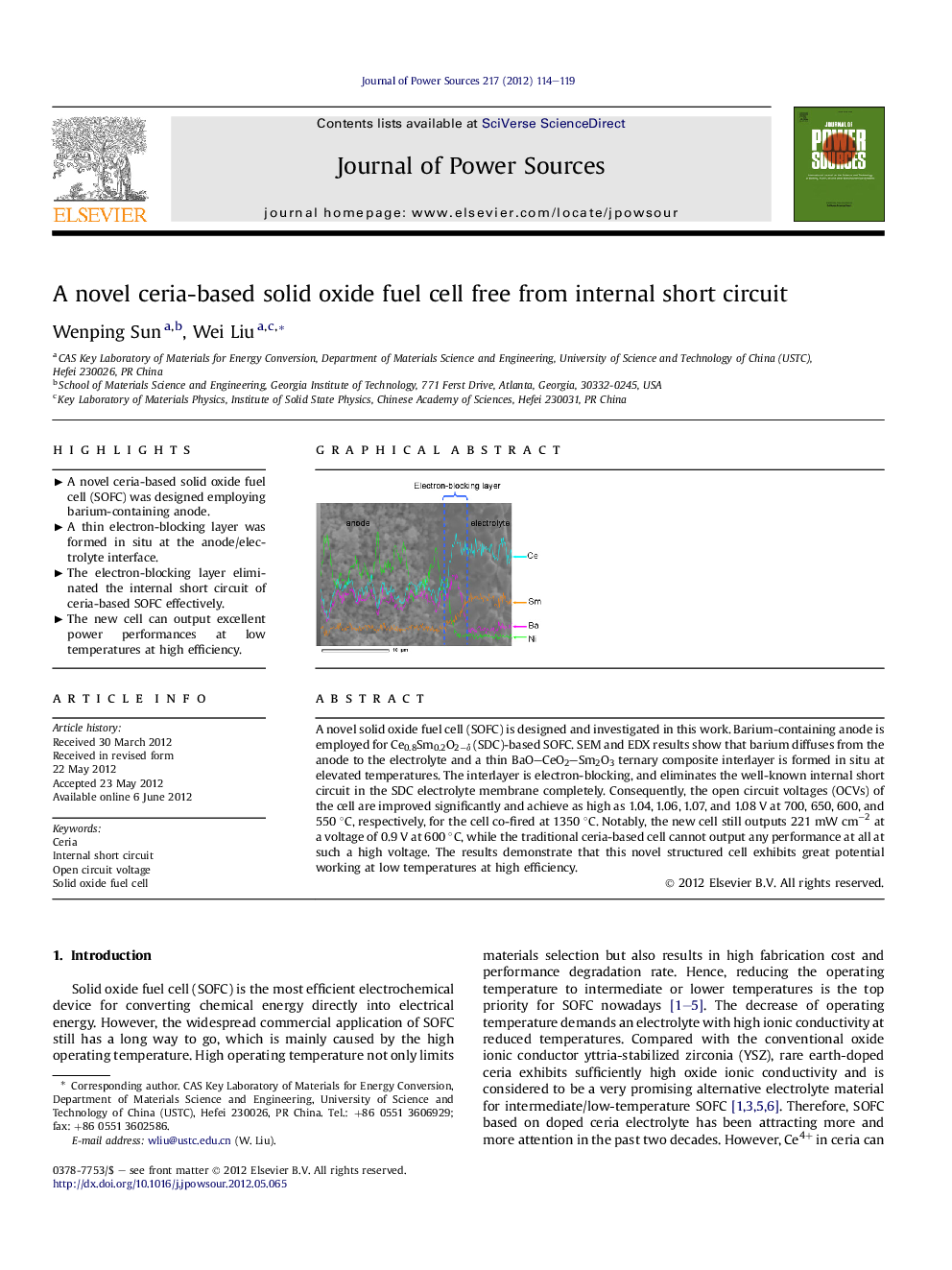| Article ID | Journal | Published Year | Pages | File Type |
|---|---|---|---|---|
| 1284416 | Journal of Power Sources | 2012 | 6 Pages |
A novel solid oxide fuel cell (SOFC) is designed and investigated in this work. Barium-containing anode is employed for Ce0.8Sm0.2O2−δ (SDC)-based SOFC. SEM and EDX results show that barium diffuses from the anode to the electrolyte and a thin BaO–CeO2–Sm2O3 ternary composite interlayer is formed in situ at elevated temperatures. The interlayer is electron-blocking, and eliminates the well-known internal short circuit in the SDC electrolyte membrane completely. Consequently, the open circuit voltages (OCVs) of the cell are improved significantly and achieve as high as 1.04, 1.06, 1.07, and 1.08 V at 700, 650, 600, and 550 °C, respectively, for the cell co-fired at 1350 °C. Notably, the new cell still outputs 221 mW cm−2 at a voltage of 0.9 V at 600 °C, while the traditional ceria-based cell cannot output any performance at all at such a high voltage. The results demonstrate that this novel structured cell exhibits great potential working at low temperatures at high efficiency.
Graphical abstractFigure optionsDownload full-size imageDownload as PowerPoint slideHighlights► A novel ceria-based solid oxide fuel cell (SOFC) was designed employing barium-containing anode. ► A thin electron-blocking layer was formed in situ at the anode/electrolyte interface. ► The electron-blocking layer eliminated the internal short circuit of ceria-based SOFC effectively. ► The new cell can output excellent power performances at low temperatures at high efficiency.
